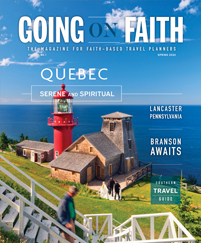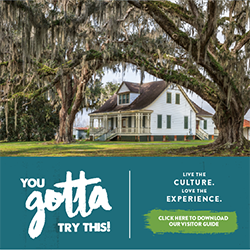
Courtesy U.S. Botanic Garden
U.S. Botanic Garden
[ Washington, D.C. ]
“I’ve had people say, ‘If I’m in the doldrums, feeling down and out, or lost and confused, I come to the conservatory, and I feel better. It really lifts my spirits,’” said Holly Shimizu, executive director of the U.S. Botanic Garden.
Built in 1933, the nearly 29,000-square-foot Lord and Burnham greenhouse is home to 10 garden rooms under glass, two garden courtyards (that are closed in winter) and many of the institution’s 26,000 plants.
The first garden room visitors enter is the Garden Court, which features plants that are used for food, fiber and other economic production. The Plant Adaptations room shows plants’ ability to evolve, and the Garden Primeval takes visitors into a Jurassic landscape. The Hawaii room features only plants native to the volcanic islands, and the World Deserts room houses succulents, grasses and other plants of the world’s arid regions.
Learn about the origins of global herbal medicine in the Medicinal Plants room or learn about discoveries made both in the wild and in the laboratory in the Plant Exploration room.
But visitors’ favorite space seems to be the Orchid Room, which showcases a few hundred of the gardens’ 5,000 orchids in an ever-changing display.
“The plants are so truly, utterly amazing,” Shimizu said. “They are, perhaps, the most beloved flowers.”
Another visitor favorite is the Jungle Room, which is housed beneath a 93-foot-tall dome and has a mezzanine that allows visitors to ascend into the jungle canopy. The room is designed to tell the story of an abandoned plantation being taken over by nature, and visitors find a formal water feature overgrown by the rain forest, Shimizu said.
“We don’t allow [the plants] to take over, but their nature is to take over,” she said.
Phipps Conservatory
[ Pittsburgh ]
Built in 1893 and designed by the New York firm Lord and Burnham, the glittering steel-and-glass Phipps Conservatory looks like a giant Victorian jewel box set in the middle of Pittsburgh’s Schenley Park.
A tropical forest conservatory was added in 2006. The exhibit rotates every three years, and the current display focuses on the tropical rain forests of India, said exhibit coordinator Jordyn Melino.
The greenhouse boasts 55,000 square feet under glass and has more than a dozen rooms, about half of which house permanent plant collections; the other half are used for seasonal or special exhibits.
The Broderie room is a trip into a formal French garden, and the Stove Room features plants found in the wild of the deep tropics. The Phipps Conservatory also has a Tropical Fruit and Spice Room, a Palm Court and a Desert Room, but the Orchid Room is always a hit with visitors, Melino said.
“We definitely get a lot of wow with the Orchid Room,” she said. “People are always wowed by the different shapes and colors and fragrances.”
The Phipps’ annual Orchid and Tropical Bonsai Show runs through February 24, and the Spring Flower Show, inspired by the 1910 story “The Secret Garden,” will be on display March 9 through April 7.
The Phipps Conservatory offers five different tours: a self-guided, a docent-led, a tropical forest, a greenhouse and a green tour.
The Phipps’ green tours are gaining popularity, Melino said. The tour includes Phipps’ “green roofs” — raised garden beds on top of the welcome center and special event hall — as well as sustainable techniques used in both the Phipps’ facilities and its growing practices.
phipps.conservatory.org









